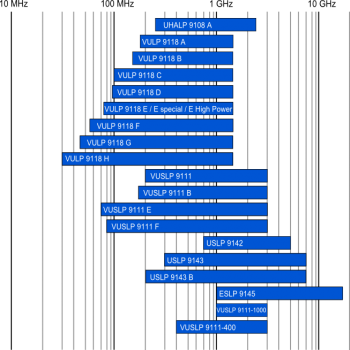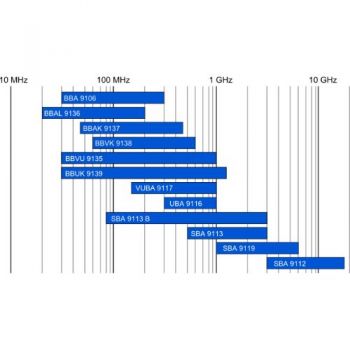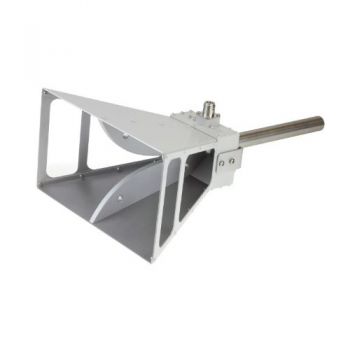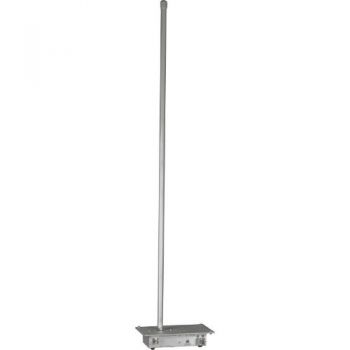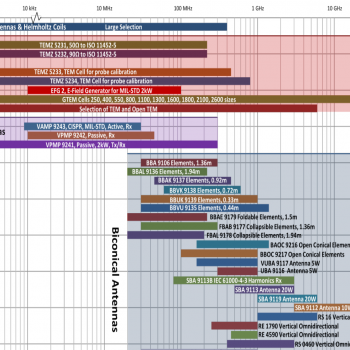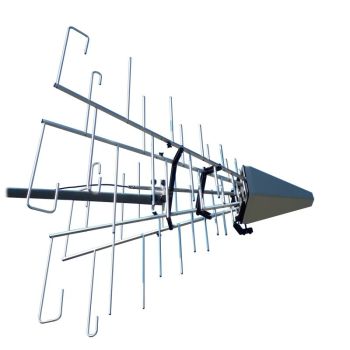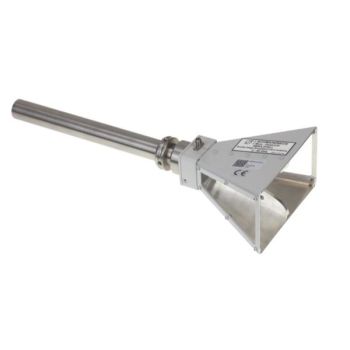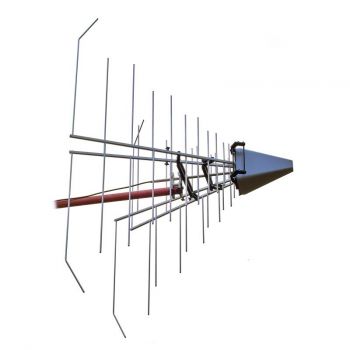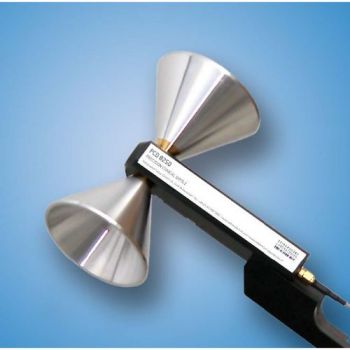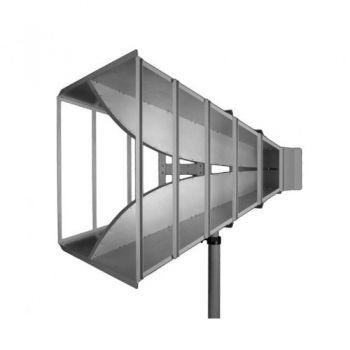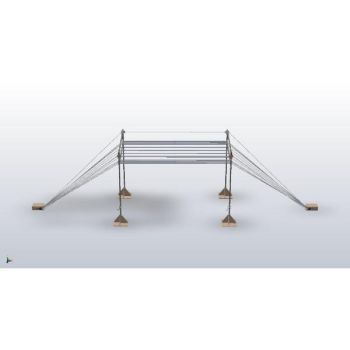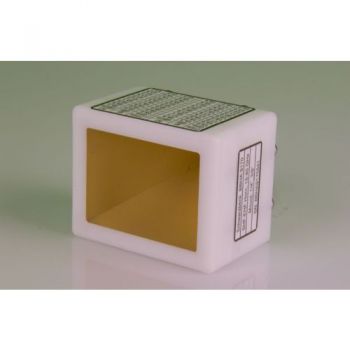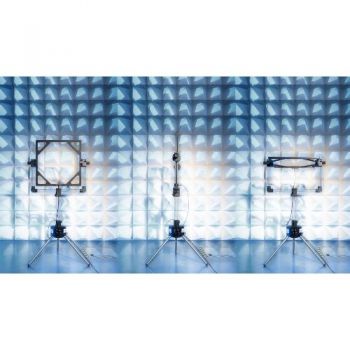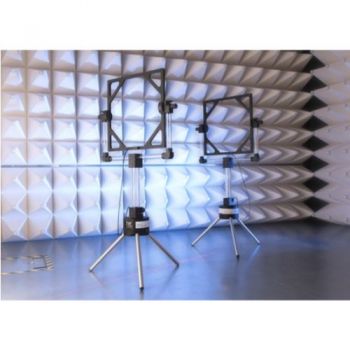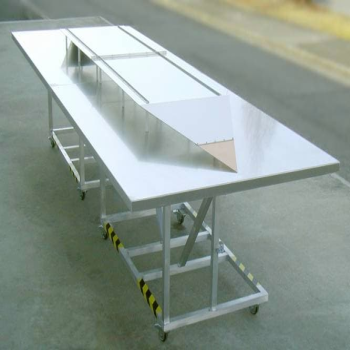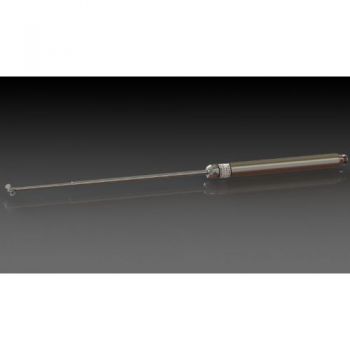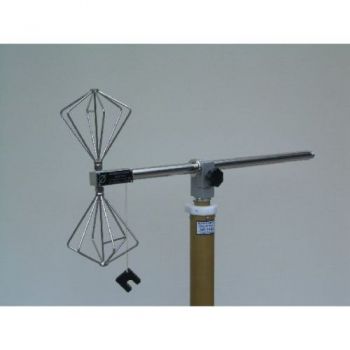

UBAA 9114 + Elements, 30 - 1000 MHz, Low-Loss Biconical Antenna
- UBAA 9114 antenna holder/balun in combination with required elements:
- Biconical Elements: BBVU 9135, BBUK 9139
- Open-Cone Elements: BAOC 9216, BBOC 9217
- Low-Loss, 4:1
- 30 - 1000 MHz, 5 W, RX
UBAA 9114(Balun) + a Selection of Elements, 30 - 1000 MHz, Low-Loss Biconical Antenna
The 4:1 Balun/Holder UBAA 9114 can accept both, biconical elements (e.g. BBVU 9135 or BBUK 9139) and open cone elements (e.g. BAOC 9216 and BBOC 9217). The low loss balun offers better antenna factors and good symmetry, especially at lower frequencies. The wide bandwidth and the fixed center of radiation help to make convenient measurements without antenna changes. Thanks to the small size UBAA 9114 can be used as a passive field sensor. The highest degree of symmetry (with slightly increased losses) can be achieved with the balun/holder UBAA 9115. The dimensions and element fixtures of both baluns are identical in order to accept the same elements. The low loss balun UBAA 9114 is most often used with the compact biconical elements BBVU 9135 or BBUK 9139. The biconical antenna is especially valuable for convenient broadband evaluations of anechoic chambers or open area test sites. In combination with the battery driven spectrum generator SG 9301 a portable reference radiator is available, which can also be used for the test site assessments.
Application as an E Field Sensor For the measurement of E field-strength in the volt-per-meter region diode or FET sensors with short dipoles are frequently used. They offer wide bandwidths and reasonable flatness, but the accuracy for a defined frequency is limited. Calibration is usually performed in TEM cells. Their vertical width should be 5 times the length of the test dipole to obtain sufficient accuracy. In the case of a Crawford triplate cell, the total height would be ten times the dipole length. Such large TEM cells suffer from a frequency limit in the VHF range. For EMC applications a calibration up to 1 GHz should be possible. The passive biconical Test Antenna UBAA 9114 has primarily been designed for field-strength measurements in the range of 30 MHz to 1 GHz. Such passive antennas with identical gain data can be accurately calibrated under free-space conditions with the "Two-Antenna-Method" that does not require a gain standard. The measurement uncertainty can be reduced to less than 1 dB under near-perfect free-space conditions using a method developed here with simultaneous height-variation and averaging the results. The aim of designing E field sensors might be a very short dipole length to measure the field strength on a defined "spot". In case of immunity testing of practical equipment, e.g. of 19" boxes, the surface or volume of the EuT must be tested. In the case of varying field-strengths, a final definition must be established. An alternative method could be the use of an E-field sensor of a comparable size compared to the EuT. With a total length of the biconical antenna of 325 mm this condition is met for a number of applications. One of these applications is the field-strength measurement at a separation of 3m in front of the tip of a logarithmic-periodic antenna for immunity testing such as IEC 801-3, IEC 1000-4-3, ENV 50140, VDE 0847, part 3, also EN 50147. The calibration of the model UBA 9114 has been extended down to the low limit of the VHF band (25 MHz). The antenna factor with a minimum of around 200 to 400 MHz rises again with lower frequencies. As the application is with high field strengths and sensitive test receivers are available for EMI testing, low f.s. levels down to 1 mV/m at 25 MHz can be measured. In these applications, a perfect shielding should be provided for coaxial cables and the test receiver because any signal interception would add to the (relatively low) voltage from the test antenna. As the VSWR of the antenna will be high at such low frequencies (far off-resonance), the test receiver input impedance should be 50 W resistive. This situation may be improved with VHF fixed attenuators of 6 dB or 10 dB between antenna output and coaxial cable. |


